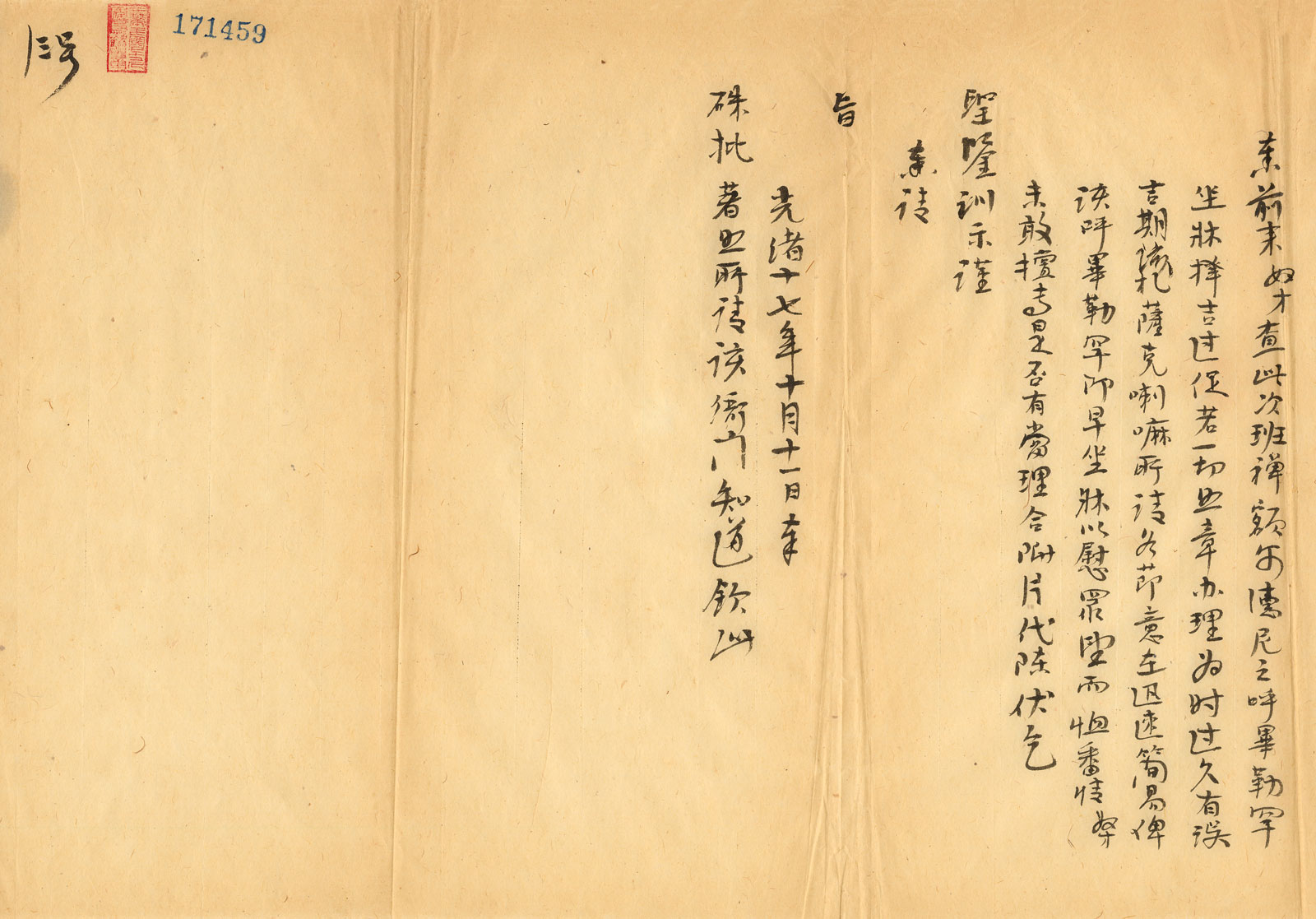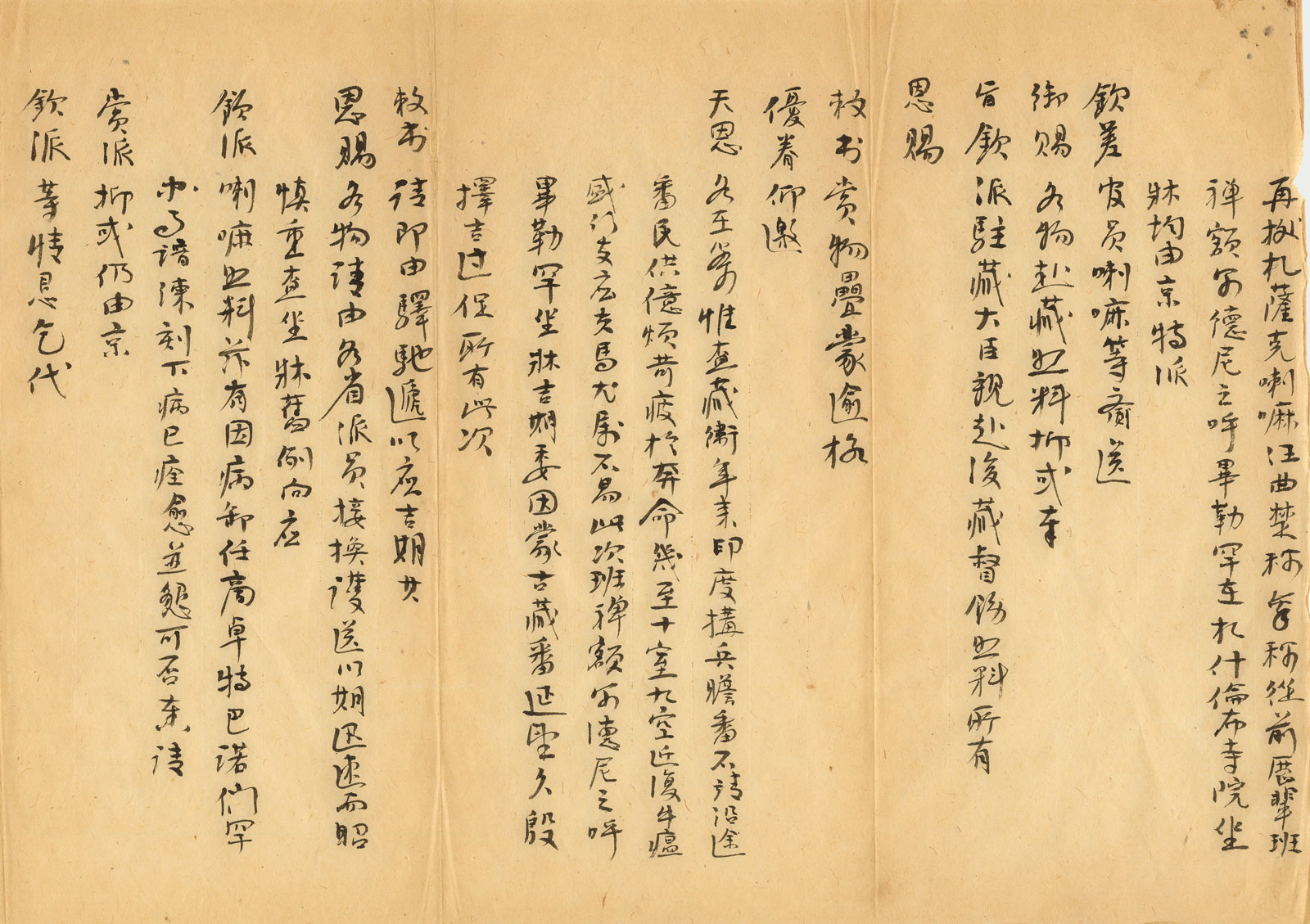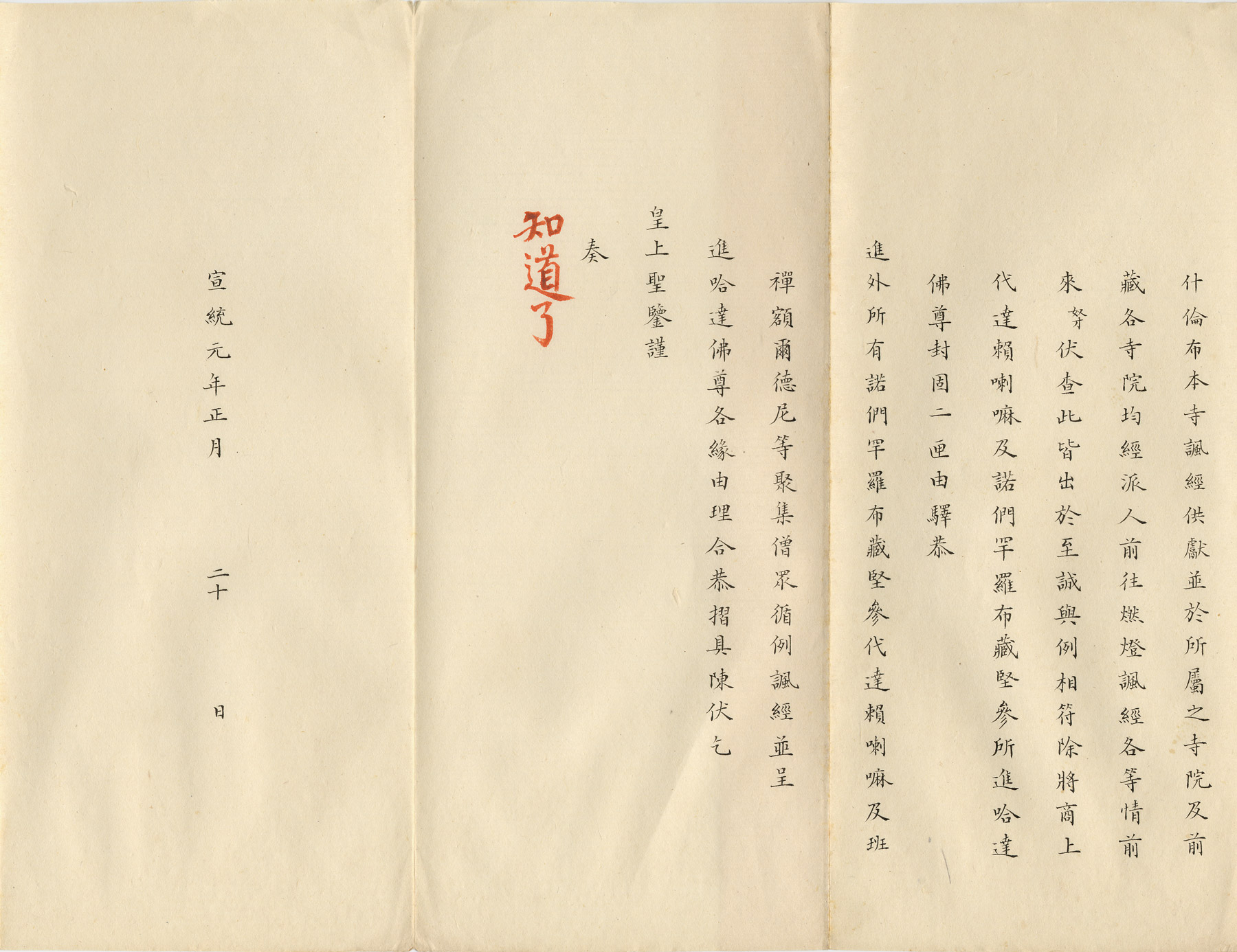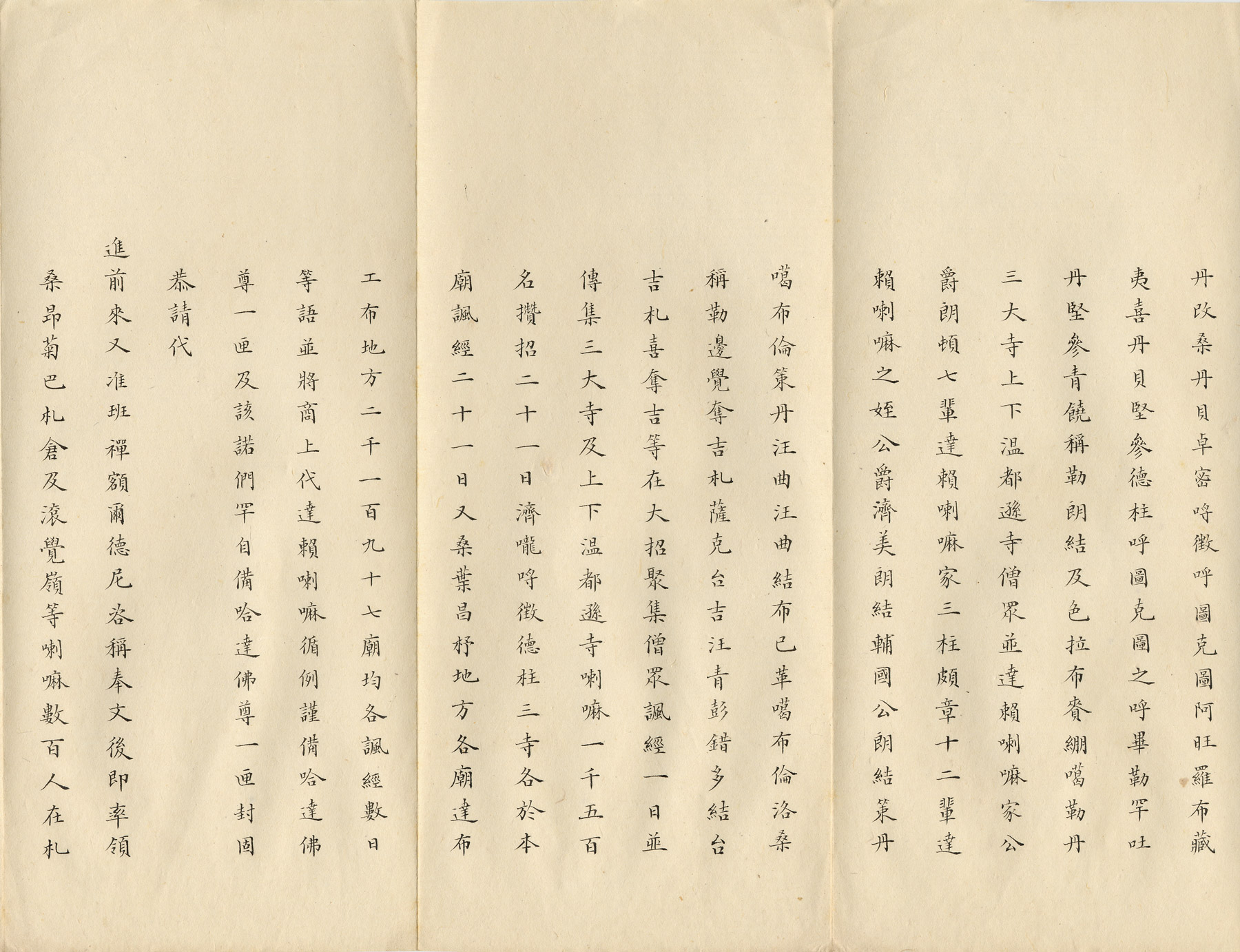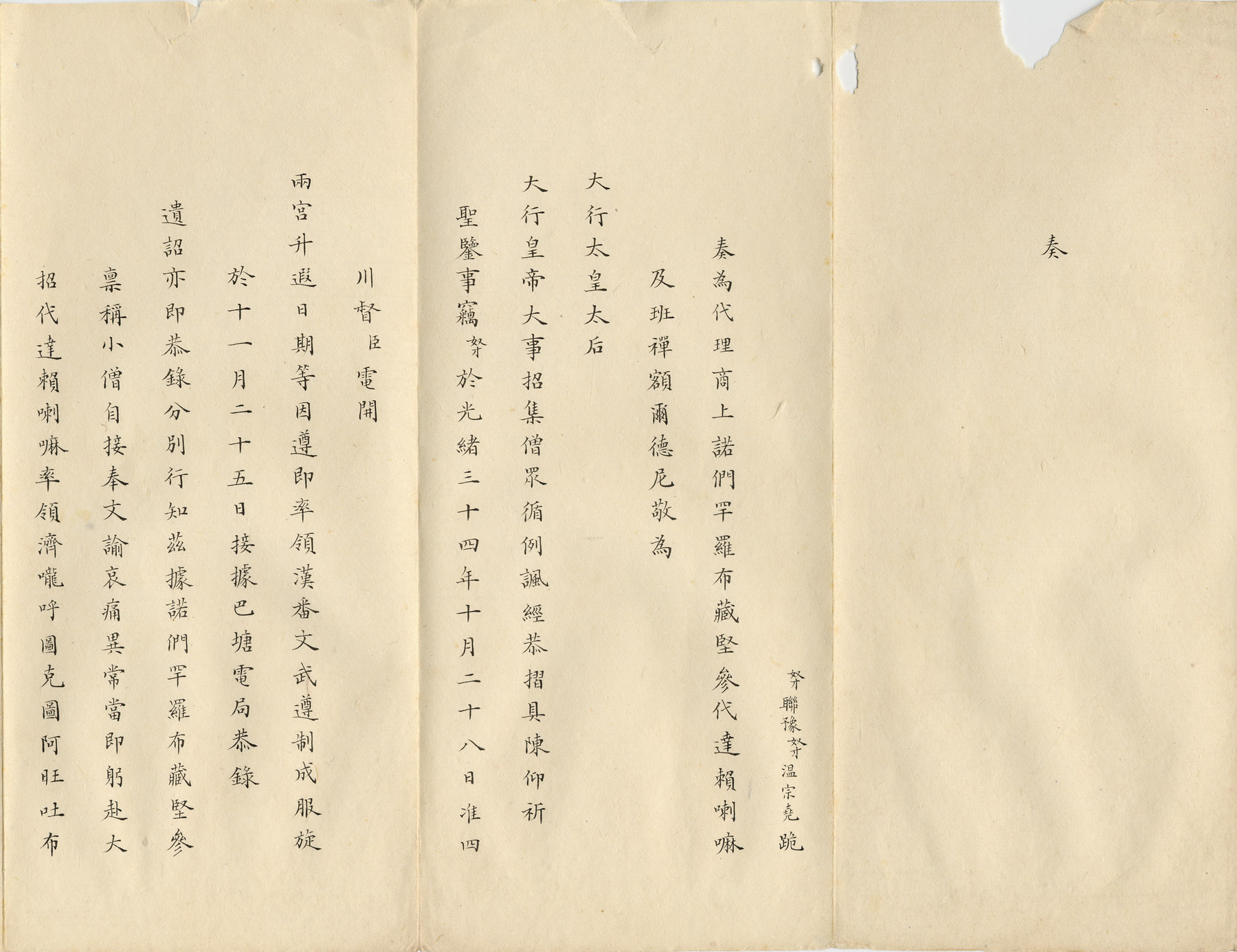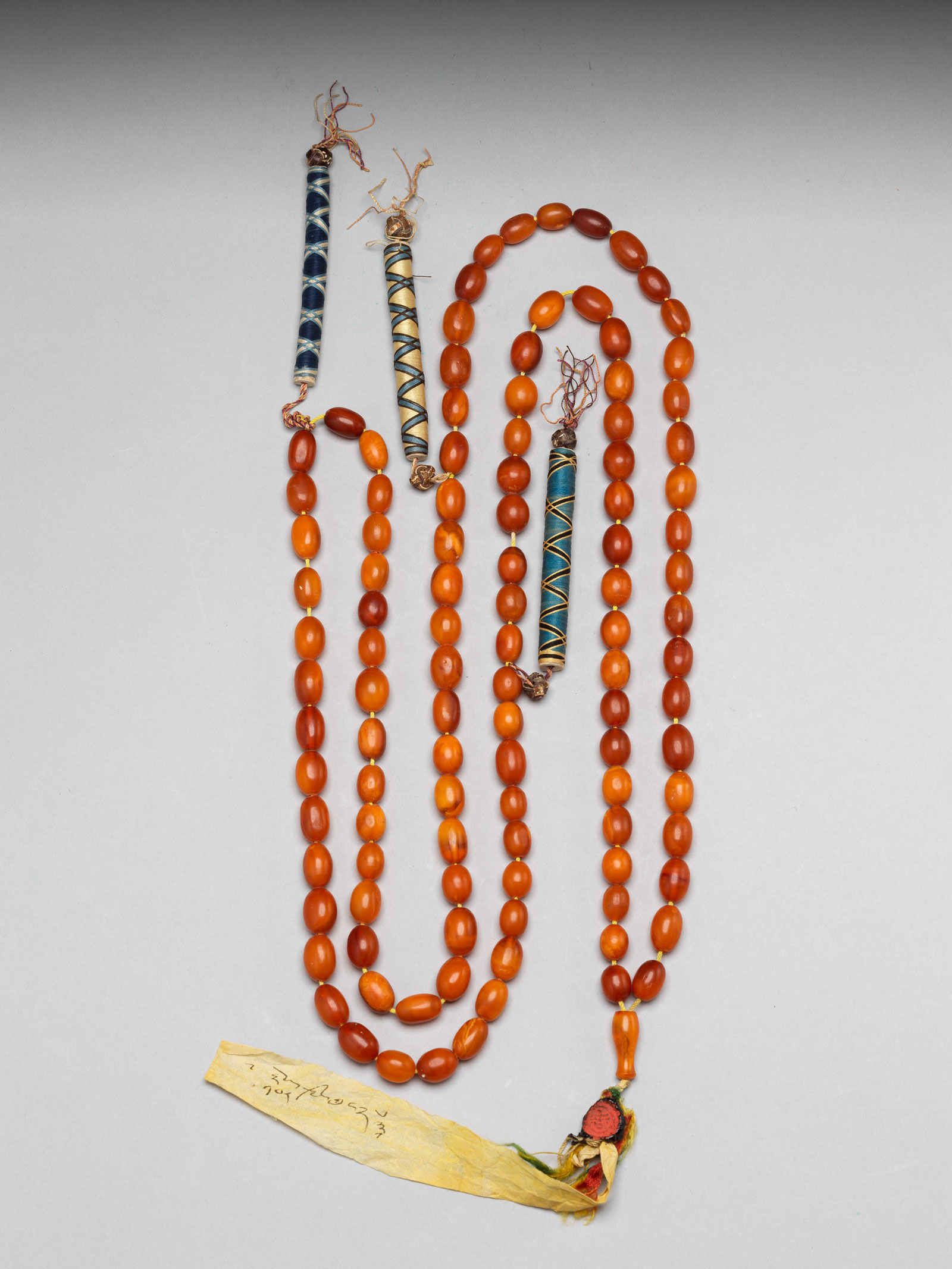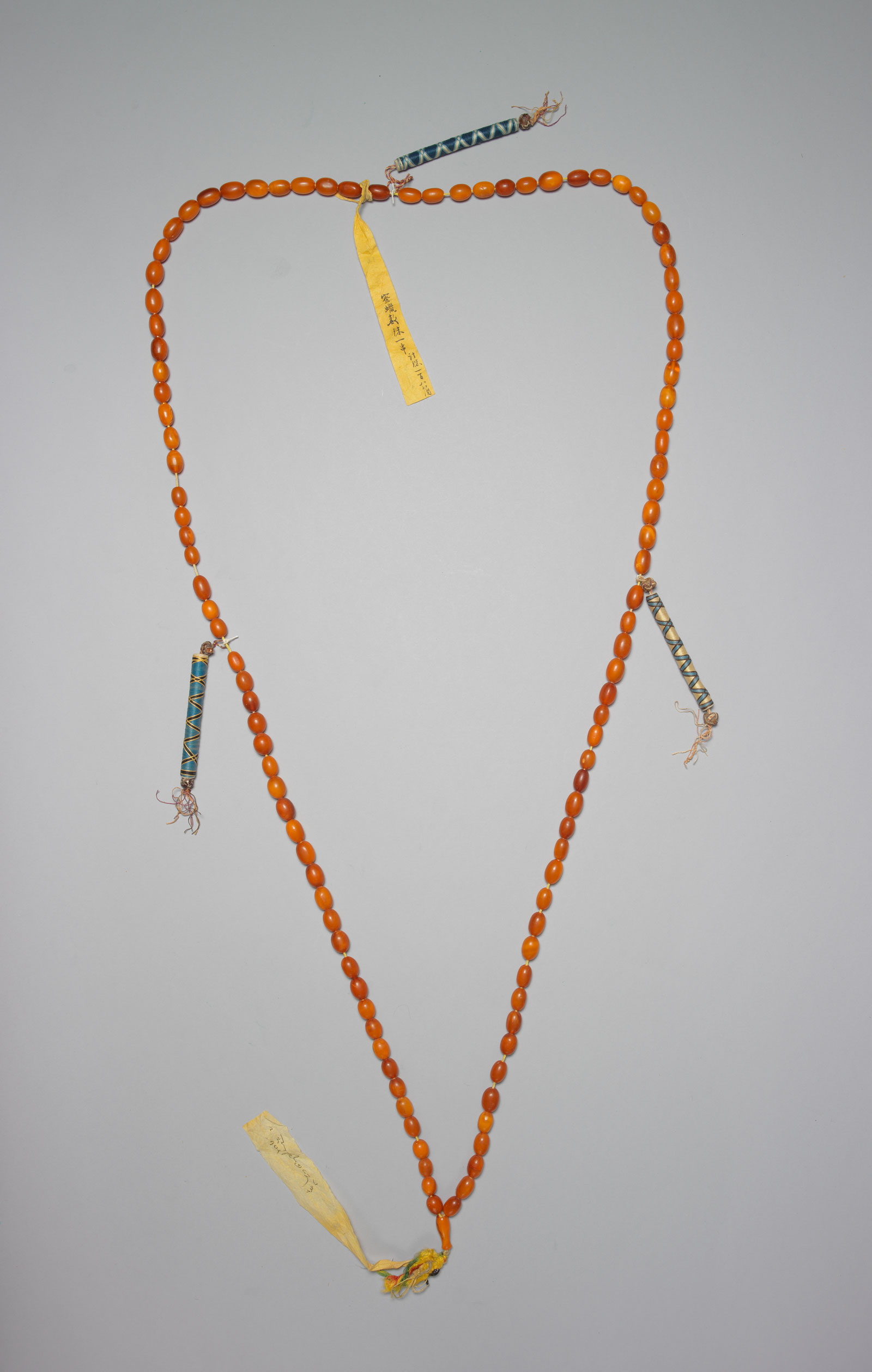The Dalai Lama and the Panchen Erdeni of Tibet
Two disciples of Tsongkhapa, Gedun Drupa (1391-1474) and Kedrup Je (1385–1438), were posthumously identified as the First Dalai Lama and the First Panchen Erdeni, respectively, which became the two foremost living Buddha lineages in the Gelug School. The title Dalai, the Mongolian word for "ocean," was bestowed upon the Third Dalai Lama (1543-1588) by the Mongolian ruler Altan Khan (1507-1582) of the Tumed. The Qing dynasty saw nine Dalai Lamas, from the Fifth to the Thirteenth. Panchen, on the other hand, is short for Pandita Chenpo, meaning "Great Pandita." The word Pandita is derived from the Sanskrit Paṇḍita, which means "Master of the Five Wisdoms."
The lineage of the Panchen Erdeni began with the Fourth Panchen Losang Chö kyi Gyaltsen (1570-1659), who received the title from Güshi Khan (1582-1654), leader of the Khoshut Mongols. The three immediate predecessors of Losang Chö kyi Gyaltsen were posthumously recognized as the First, Second, and Third Panchen Erdeni. The Qing dynasty saw six Panchens, from the Fourth to the Ninth. This section offers an iconographic introduction to the important reincarnated teachers of the Dalai and the Panchen lineages, and displays important artifacts connected with the visits to Beijing made by the Fifth Dalai Lama and the Sixth Panchen Lama to meet with Qing emperors. It also shows how the Qing court employed the "Golden Urn" system to select khubilghans and to what extent the practice impacted the living Buddha lineages of Tibetan Buddhism.
The Ninth Panchen Erdeni of the Late Qing
The Ninth Panchen Erdeni is known mostly for his exile in China during the Republican era. The Qing historical archives in the National Palace Museum provide a glimpse into his interactions with the Qing court towards the end of the Manchu empire.
Copy of a palace memorial on the selection of an auspicious date for Panchen Erdeni's succession ceremony
- Submitted by Shengtai (?-1892), Imperial Resident in Tibet
- 11th day of the 10th month of the 17th year of the Guangxu reign (November 12, 1891), Qing dynasty
This palace memorial, presented in the 10th month of the 17th year of the Guangxu reign, explains to the emperor the arrangements made for the succession ceremony of the Ninth Panchen (1883-1937) in the Tashi Lhunpo Monastery the following year on the 3rd day of the 1st month (February 1, 1892). As the date had been decided at haste, there may have been insufficient time to prepare the tributes in accordance with custom, so the Monastery's head lama put in a request to streamline the event, which was approved by the Guangxu emperor. The Qing court also provided ten thousand taels of silver for the ceremony, which was presided over by Shengtai, the Imperial Resident in Tibet.
Palace memorial reporting the resident Tibetan Treasurer, on behalf of Dalai Lama and Panchen Erdeni, mustering monks to chant sūtras for the recently departed Empress Dowager Cixi and Emperor Guangxu
- Submitted by Lianyu (n.d.), Imperial Resident in Tibet, and his Administrative Assistant Wen Zongyao (1876-1947)
- 20th day of the 1st month of the 1st year of the Xuantong reign (February 10, 1909), Qing dynasty
The Guangxu emperor (r. 1875-1908) and Empress Dowager Cixi (1835-1908) died within one day of each other in the 34th year of the Guangxu reign (1908). In accordance with the Qing system of rites, high-ranking khubilghans including the Dalai and the Panchen were to chant sūtras for the deceased. This palace memorial relays a report by the then regent of Tibet, the Eighty-sixth Ganden Tripa (Losang Gyaltshan, 1840-?), on how the monasteries led by the Dalai and the Panchen chanted sūtras to transfer merits to the late emperor and empress dowager. After the Thirteenth Dalai Lama (1876-1933) left Lhasa in 1904 following the British invasion of Tibet, Losang Gyaltshan acted as regent of Tibet. When this palace memorial was submitted, the Ninth Panchen (1883-1937) was leading monks in sūtra chanting in the Tashi Lhunpo Monastery, while the Thirteenth Dalai was residing in the Ta'er Monastery in Qinghai on his way to return to Tibet from Beijing.
Amber prayer beads
- Presented by Panchen Erdeni
- Received in the 21st year of the Guangxu reign (1895), Qing dynasty
This string of oval amber prayer beads was presented by the Ninth Panchen (1883-1937). The 108 beads are strung on a yellow string, and the bottle-shaped pagoda is connected to a piece of red rosin sealing wax and a yellow tag with a Tibetan inscription written in ink. The content of the Tibetan inscription is identical to those written in Chinese on two other yellow tags attached to three smaller strings: "The Panchen Erdeni presented the brtan bzhugs and a string of amber prayer beads (108 beads) in annual tribute," and "A string of amber prayer beads (108 beads) presented by chief Guo Shuangxi was received on the 15th day of the 9th month of the 21st year of the Guangxu reign (Nov. 1, 1895)."
